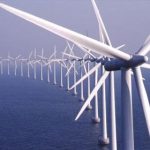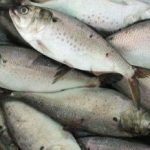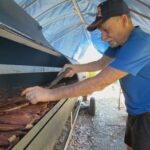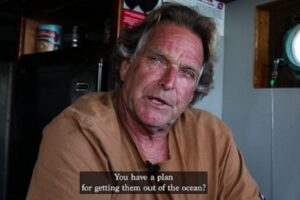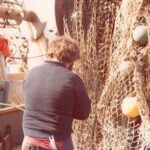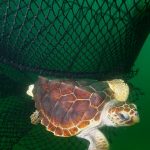Tag Archives: Board of Fisheries
Board of Fisheries says all salmon bycatch from one pollock trawl fishery must be retained
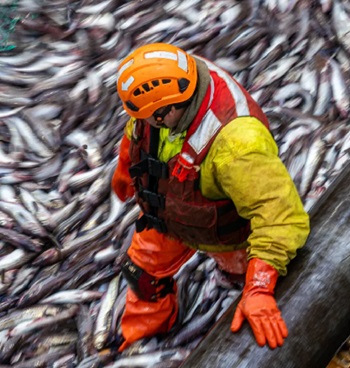 Alaska’s Board of Fisheries considered four proposals that would have severely restricted or even shut down the pollock trawl fishery in Prince William Sound. Ultimately, though, only one was passed that didn’t go nearly that far. The amended version of Proposal 15, which was changed by Board member Tom Carpenter, was approved six to one. Proposals 14 and 16 had no action taken based on #15 passing, and proposal 17 failed with only one member in favor. The measure stipulates that all salmon bycatch must be brought back to port and surrendered to the Alaska Department of Fish & Game, also referred to as mandatory retention. This would add on to the mandatory retention that is already required for rockfish and potentially address some of the salmon bycatch concerns in the trawl fishery. links, more, >>CLICK TO READ<< 14:31
Alaska’s Board of Fisheries considered four proposals that would have severely restricted or even shut down the pollock trawl fishery in Prince William Sound. Ultimately, though, only one was passed that didn’t go nearly that far. The amended version of Proposal 15, which was changed by Board member Tom Carpenter, was approved six to one. Proposals 14 and 16 had no action taken based on #15 passing, and proposal 17 failed with only one member in favor. The measure stipulates that all salmon bycatch must be brought back to port and surrendered to the Alaska Department of Fish & Game, also referred to as mandatory retention. This would add on to the mandatory retention that is already required for rockfish and potentially address some of the salmon bycatch concerns in the trawl fishery. links, more, >>CLICK TO READ<< 14:31
Pair of bills makes electronic monitoring of state-regulated fisheries a possibility
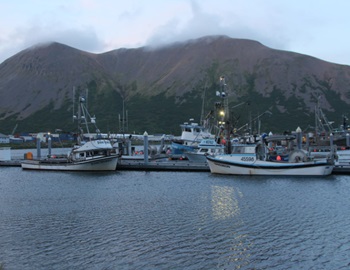 Nels Evens is a longliner and gillnetter, and the executive director of the Petersburg Vessel Owners Association. He says he’s not sure what the bills’ aim is. “Because it is so broad, and we don’t understand what it’s really trying to get at, we’re not supportive of it,” he said. The pair of bills – Senate Bill 209 and House Bill 294 – stem from a discussion at last year’s Board of Fisheries meeting. The Board was trying to figure out how to enforce regulations that require Area M fishermen to keep chum salmon, instead of tossing them back in favor of much more valuable King salmon. Area M is along the Alaska Peninsula and Eastern Aleutians. It intercepts some chum salmon bound for western Alaska. more, >>click to read<< 08:53
Nels Evens is a longliner and gillnetter, and the executive director of the Petersburg Vessel Owners Association. He says he’s not sure what the bills’ aim is. “Because it is so broad, and we don’t understand what it’s really trying to get at, we’re not supportive of it,” he said. The pair of bills – Senate Bill 209 and House Bill 294 – stem from a discussion at last year’s Board of Fisheries meeting. The Board was trying to figure out how to enforce regulations that require Area M fishermen to keep chum salmon, instead of tossing them back in favor of much more valuable King salmon. Area M is along the Alaska Peninsula and Eastern Aleutians. It intercepts some chum salmon bound for western Alaska. more, >>click to read<< 08:53

Commercial shrimpers adjusting to new spring fishing season
Three commercial pot shrimp fishery areas near Ketchikan are closed or set to close as fishermen approach area-specific spot shrimp harvest limits about two weeks after the fishery opened May 15. Fishermen targeting spot shrimp with pot gear this month are testing new waters after the Board of Fisheries during its 2022 rule-setting process voted to change the pot shrimp season start date from Oct. 1 to May 15; the fishery had occurred during fall and winter months since the mid-1900s. “It changed some of the players slightly, some of the people that typically fish in October are unavailable in the spring,” Meredith said. “You’ve got some new people on the grounds that weren’t available to do it in October that are now participating in May.” Meredith said that most of the fishermen who have been long-time pot shrimp fishermen “expected it to be a little different.” >click to read< 11:38
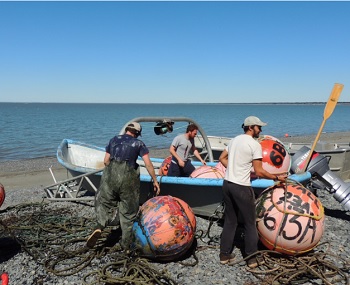
Set-netters’ case shot down, again, in court
And after the closure in 2019, set-netters represented by the Cook Inlet Fishermen’s Fund sued the state in hopes the court would order managers to rework that management plan and others. It alleged restrictions the state had placed on the commercial fishermen were unscientific and arbitrary and flew in the face of the Magnuson-Stevens Act. The Kenai court said because there was no federal management plan for Cook Inlet fisheries at that time, the state was not bound by those standards. And it said the state’s Board of Fisheries and Department of Fish and Game had the discretion to write and enforce their own rules. The Supreme Court doubled down on that opinion last week. >click to read< 12:04
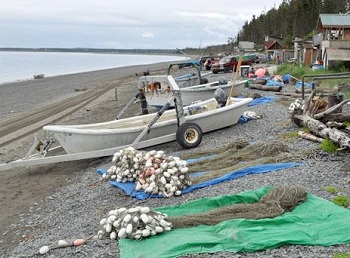
Board of Fisheries has denied two emergency petitions from Kenai Peninsula setnetters
Two setnetters, Chris Every and Paul Shadura II, submitted similar petitions to the board, asking that the department reopen the setnet fishery just out to 600 feet below mean high tide. They argue that the evidence shows that the 600-foot fishery harvests very few king salmon and allows them to harvest the nearshore sockeye, controlling escapement and providing fishing time without seriously risking kings. >click to read< 09:40

Some setnetters ask state to reopen limited fishery
Commercial setnet fishermen in Cook Inlet had their season cut short last week. When the Alaska Department of Fish and Game closed the Kenai River to sportfishing for king salmon, it closed the east setnet fishery completely. Some of them had only had a handful of openers. There are still plenty of sockeye in the water, which are the main fish the commercial fleet harvests, and setnetters are making some last-ditch plays to try to save some of their season. Ted Crookston, who has been setnetting on the Salamatof beach for nearly six decades, is asking the Board of Fisheries to at least open the setnets in a narrow strip just offshore—out to 600 feet below mean high tide.,, “We’re sitting here on the beach and catastrophically denied access to anything and you’re saying that it’s justified—it’s not,” >click to read< 13:48
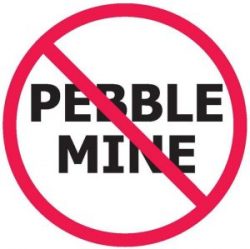
Fishermen concerned over Pebble employee appointed to Board of Fisheries
While communities and fishermen in Bristol Bay are facing an immediate challenge in deciding if and how to hold the $300 million salmon fishery in a few weeks, an appointment to the Board of Fisheries is adding to the stress felt by many in the region.,, Among the governor’s appointments is Abe Williams, who is an employee of the Pebble Partnership,,, Williams was born and raised in Naknek, currently lives in Anchorage, and is a fourth-generation Bristol Bay fisherman. However, his position on Pebble Mine has bothered both commercial and sport fishermen in Bristol Bay. Williams is currently the Director of Regional Affairs for the Pebble Partnership. >click to read< 12:14
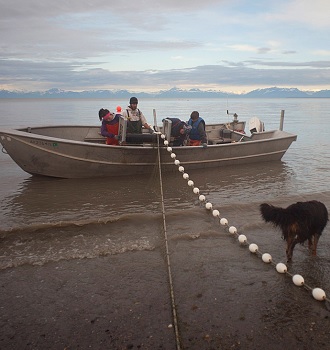
Cook Inlet setnet permit buyout bill stalled in Senate
Senate Bill 90, sponsored by Sen. Peter Micciche, R-Soldotna, would establish a mechanism in law for setnetters on Cook Inlet’s East Side to set up a permit buyback. There’s no funding included in the bill, but the establishment of the mechanism itself would allow stakeholders to seek funding, whether it comes from the federal government, state, or private equity. ,, The East Side setnet fishery has gradually been losing value for years. For the last few decades, user-group politics have led to the Board of Fisheries reducing the time and area allowances for setnetters on Cook Inlet’s East Side, who compete for salmon headed for the Kenai and Kasilof rivers, which also host large sport and personal-use fisheries. more, >click to read< 20:46
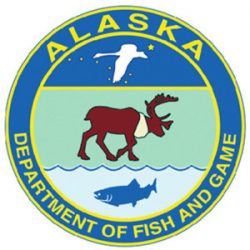
Fish processors brace for reductions after Board of Fish decisions
Over the past two weeks the Alaska Board of Fisheries has adopted changes to fishing regulations and management plans in Upper Cook Inlet that aim to put more fish into the Kenai River and streams and the MatSu valley. The plans the board passed to increase both sockeye and king salmon escapement goals in the Kenai River came with restrictions for setnet fishermen, and the plan to allow more fish to the MatSu valley took away an area traditionally fished by the drift gillnet fleet. >click to read<
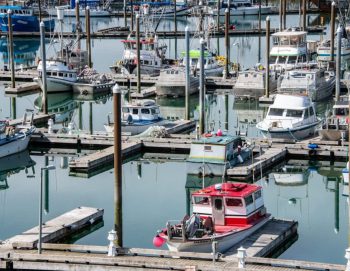
Alaska Board of Fisheries issues 2019-2020 proposal book
Proposals to be considered by the Alaska Board of Fisheries during its 2019-2020 meeting cycle are now available for download,,, The 276 proposals up for review are for Lower Cook Inlet Finfish, Kodiak Finfish, Upper Cook Inlet Finfish, and Statewide (except for Southeast and Yakutat King and Tanner Crab, and Prince William Sound Tanner Crab) King and Tanner Crab regulatory meetings. >click to read< 11:25
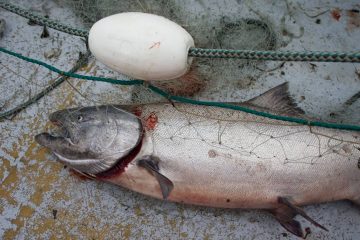
ADFG proposes sweeping changes to Cook Inlet salmon goals
The Alaska Department of Fish and Game’s recommendations for salmon escapement goal ranges in Upper Cook Inlet are out significantly earlier than they have been in past years. Upper Cook Inlet, which reaches north from the Kasilof River, encompasses a number of heavily fished salmon stocks, including the Kenai and Susitna rivers. ADFG reviews the escapement goal ranges for the rivers every three years or so and makes recommendations before the Board of Fisheries takes up the proposals for the area during the in-cycle meeting. >click to read<14:59
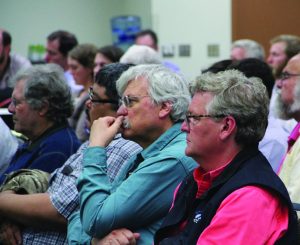
Year in Review: A dismal year for salmon and halibut in the Gulf, Bristol Bay booms, battles over hatcheries
This summer was a disappointment for salmon fishermen across the Gulf of Alaska, both in the timing and in the numbers. Salmon fishermen from Kodiak to Southeast saw poor harvests and poor profits this year due to unexpectedly small runs of sockeye, king and pink salmon. No. 2: Records smashed in Bristol Bay, Norton Sound, No. 3: Hatchery battles at the Board of Fisheries, No. 4: Halibut hardships, falling quotas and prices, >click to read<11:35
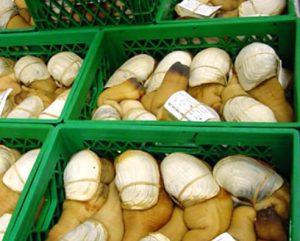
Southeast dive fisheries, crab seasons start in October
The season for geoduck clam diving starts Oct. 1. The first opening could be Oct. 3 or 4, depending on testing for the toxins that cause paralytic shellfish poisoning. The region’s guideline harvest level is 702,100 pounds. The large clams are plucked from the ocean floor and shipped whole and live to overseas markets, if the clams don’t test too high for PSP or inorganic arsenic. There are a couple of changes for that fishery this year. Past openings have been only from 9 a.m. to 3 p.m., one day a week. The Board of Fisheries last winter approved a 1,000-pound weekly harvest limit. >click to read<12:48
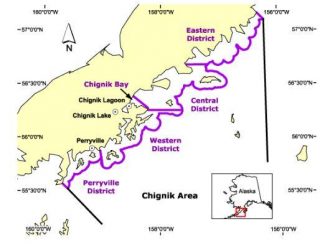
Board of Fisheries declares low Chignik sockeye returns an emergency
Like many Gulf of Alaska communities, far fewer sockeye are returning to the Chignik River than forecasted. Chignik has an early and late run. The combined escapement goal for July 20 is 416,000 sockeye. As of July 18, only 222,000 sockeye had made it upriver to spawn. With no harvestable surplus, the Chignik Management area has not had a commercial fishing opportunity targeting sockeye. Further, some residents say they are voluntarily forgoing subsistence fishing to boost escapement. Audio report, >click to read<13:24
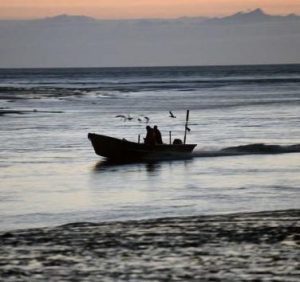
Northern District king salmon setnetters stay closed
Subsistence fishermen in part of the Susitna River drainage will be able to harvest a few kings, but commercial fishermen in Northern Cook Inlet will remain closed for now. The Board of Fisheries considered two emergency petitions Monday related to the preseason restrictions of king salmon fishing in northern Cook Inlet after preseason forecasts indicated that the Deshka River would not see enough king salmon returning to meet its escapement goals. The board approved an action related to a petition from the Mt. Yenlo Fish and Game Advisory Committee, which requested limited subsistence fishing opportunity for king salmon on the upper Yentna River, and denied another asking for reconsideration of the commercial fishery closure from the Tyonek Fish and Game Advisory Committee. >click to read<
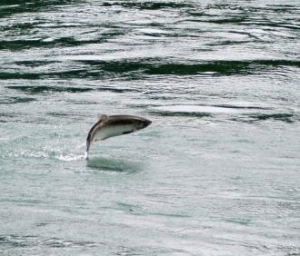
Board of Fisheries denies petition on hatcheries
The members of the Board of Fisheries agree that Pacific salmon hatchery impacts on wild salmon stocks are concerning, but they aren’t clear on what to do to address them yet. At a meeting Monday to consider emergency petitions, the board declined to consider an emergency petition submitted by the Kenai River Sportfishing Association and signed by a variety of Southcentral Alaska sportfishing organizations expressing concern about a hatchery operation permit. Specifically, the petition asked the board to intervene in a permit modification procedure for the Prince William Sound Aquaculture Corporation to increase its pink salmon egg take this season by 20 million. >click to read<15:35

Fields withdraws name from fish board consideration
It was a quick dip into the state fisheries politics pool for Duncan Fields. The Kodiak resident on Wednesday withdrew his name from consideration for the Board of Fisheries, a little less than two weeks after Gov. Bill Walker announced his nomination March 16, according to a press release from Walker’s office. Fields, a commercial salmon fisherman and former member of the North Pacific Fishery Management Council, had become a flashpoint of controversy among sportfishing groups because of his background in commercial fisheries.>click to read<10:47

Board of Fisheries nomination proves controversial
The nomination of a Kodiak-based fisherman to the Alaska Board of Fisheries has led to concern about an overrepresentation of commercial fisheries interests on the board. Governor Bill Walker recently recommended Duncan Fields for the Board of Fisheries to fill the seat left by Anchorage’s Alan Cain, whose term is up this year. Ricky Gease, the executive director of the Kenai River Sport Fishing Association, sees a need for that seat to go to someone with experience in Anchorage-based sports and personal use fishing. >click to read<21:24
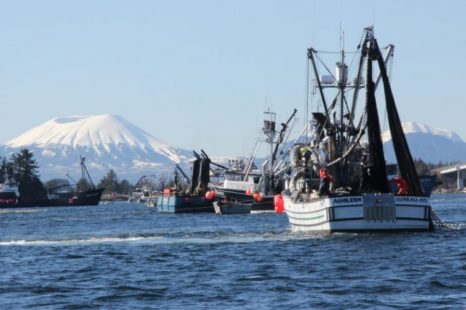
Commercial fleet highlights economic impact of Sitka Sound herring catch
Despite three days of impassioned testimony before the Board of Fisheries in January, not much has changed for the Sitka Sound sac roe herring fishery, which will ramp up in about a month. Local subsistence harvesters won an increase in the size of their exclusive use area, but failed to persuade the board to reduce the commercial catch. Fishermen and processors from Petersburg joined with other commercial interests to remind the board of the economic importance of the annual springtime export. >click to read< 14:53

Board votes down change in Southeast Dungeness crab season
Crabber Max Worhatch proposed the change and successfully got the board to add the proposal to the meeting after missing the deadline for regulation changes.“I would like to seriously consider this,” Worhatch told the board. “I put a proposal in, just like this three years ago, didn’t get anywhere. The department felt like they had to have something to manage the fishery when it got to the low end. But in my experience and just from what I’ve seen in Oregon, California and Washington, size sex and season for Dungeness crab works and it works extremely well. It’s kindof an autopilot thing, doesn’t take a lot of work.” >click here to read< 10:22

Board of Fisheries weighs proposals protecting Chinook stocks in Southeast
The future of king salmon fishing in Southeast will change this week as the Board of Fisheries considers proposals to boost struggling Chinook stocks on the Chilkat and Taku rivers. The board convened in Sitka Thursday for a 13-day meeting that will resume Monday morning. The meeting isn’t limited to king salmon. This year’s proposals cover everything from the number of crab pots a commercial Dungeness fisherman can use, to the use of deep-sea release mechanisms for rockfish and the opening of a commercial squid fishery. >click here to read<17:50 
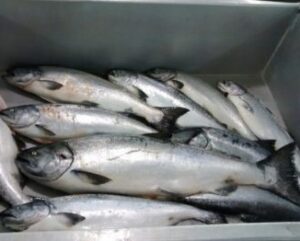
Alaska fishermen bewildered, alarmed at loss of king salmon
There’s an unsolved fish mystery playing out right now along a rugged, 300-mile stretch of Southeast Alaska coastline: What’s killing off the thousands of king salmon that, at an increasing rate, swim out to sea and don’t return to spawn? “There’s a big ocean out there,” said Tad Fujioka, a commercial fisherman in Sitka. “And it’s kind of a black box.” Alaska fishermen and scientists don’t know what, exactly, is causing king salmon returns to plummet across Southeast. But they’re trying to adapt to the consequences: closures for certain fisheries and new limits on catches,,, click here to read the story 10:20
Board of Fisheries declines request to cap Kodiak sockeye harvest
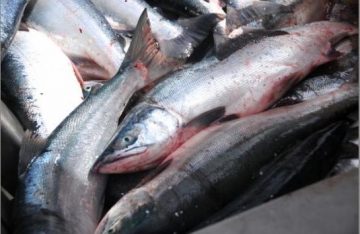 The Board of Fisheries won’t take up an out-of-cycle request to cap Kodiak sockeye salmon harvests during certain periods of the season, though it won’t be the last time the issue comes up. The board declined to accept an agenda change request that proposed a new management plan for the commercial purse seine fishery in the Kodiak Management Area setting weekly and seasonal limits on sockeye salmon harvest. The request, submitted by the United Cook Inlet Drift Association, raises concerns brought to light in a recent Alaska Department of Fish and Game genetic study showing that Kodiak seiners catch hundreds of thousands of Cook Inlet-bound sockeye salmon during the summer. click here to read the story 08:57
The Board of Fisheries won’t take up an out-of-cycle request to cap Kodiak sockeye salmon harvests during certain periods of the season, though it won’t be the last time the issue comes up. The board declined to accept an agenda change request that proposed a new management plan for the commercial purse seine fishery in the Kodiak Management Area setting weekly and seasonal limits on sockeye salmon harvest. The request, submitted by the United Cook Inlet Drift Association, raises concerns brought to light in a recent Alaska Department of Fish and Game genetic study showing that Kodiak seiners catch hundreds of thousands of Cook Inlet-bound sockeye salmon during the summer. click here to read the story 08:57
Pendulum ticks toward commercial fishermen as Cook Inlet meeting wraps
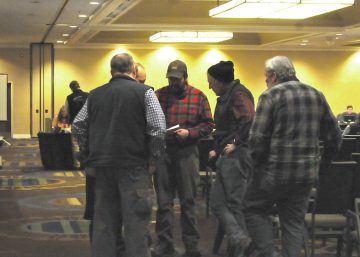 The Board of Fisheries pendulum may have swung, but it’s still attached to the same clockwork. The triennial Upper Cook Inlet Board of Fisheries meeting ended March 8, leaving behind a big fish goal for the Kenai River late king salmon run, potential expanded hours for the Cook Inlet drift and setnet fleets, and a brand new early run king salmon plan on the Kenai River. Though the tone was mild compared to that of 2014, the same grudges against the Alaska Department of Fish and Game, the board, and among rival user groups are bubbling away. After three years of buildup following an emotional 2014 meeting, the 2017 marathon was sparsely attended and largely civil, focusing mainly on what ADFG Commercial Fisheries Division Operations Manager Forrest Bowers called “minor changes.” “This early run king plan, that’s probably the biggest change outside the large fish goal,” Bowers said. “With the late run sockeye plan, there was a long discussion but at the end of the day it didn’t really do much. The late run king plan, I mean, again, long discussion, relaxed the August restriction a bit, but it’s fundamentally the same.” continue reading the article here 13:25
The Board of Fisheries pendulum may have swung, but it’s still attached to the same clockwork. The triennial Upper Cook Inlet Board of Fisheries meeting ended March 8, leaving behind a big fish goal for the Kenai River late king salmon run, potential expanded hours for the Cook Inlet drift and setnet fleets, and a brand new early run king salmon plan on the Kenai River. Though the tone was mild compared to that of 2014, the same grudges against the Alaska Department of Fish and Game, the board, and among rival user groups are bubbling away. After three years of buildup following an emotional 2014 meeting, the 2017 marathon was sparsely attended and largely civil, focusing mainly on what ADFG Commercial Fisheries Division Operations Manager Forrest Bowers called “minor changes.” “This early run king plan, that’s probably the biggest change outside the large fish goal,” Bowers said. “With the late run sockeye plan, there was a long discussion but at the end of the day it didn’t really do much. The late run king plan, I mean, again, long discussion, relaxed the August restriction a bit, but it’s fundamentally the same.” continue reading the article here 13:25
Ludger Dochtermann of Kodiak – Reinstituting Reasonable Crab Pot Limits
 Dear Board of Fisheries members: My name is Ludger Dochtermann of Kodiak, and I own two crab vessels, the F/V Northpoint and F/V Stormbird. Like all others in the fleet, we are deeply affected by the recent sinking of the F/V Destination off St. George Island and the loss of her entire crew. The Stormbird is also fishing out of St. George this season. It is obvious that icing played a large part in that sinking, and word is that the vessel had an excessive number of pots aboard at the time. Tarps were ripped off and found among the flotsam along with buoys and a life ring. The weather at the time made for severe conditions and risky business. It is challenging to parse between proposals, regulations, and policy, and just plain duty. The IFQ fisheries were instituted for privatization; and a federally imposed IFQ system came into being without NPFMC and U.S. Senate testimonies by vessel architects, load-line engineers, USCG safety officers, insurance experts and experienced captains discussing the specific concerns of safety. Continue reading the letter here 15:54
Dear Board of Fisheries members: My name is Ludger Dochtermann of Kodiak, and I own two crab vessels, the F/V Northpoint and F/V Stormbird. Like all others in the fleet, we are deeply affected by the recent sinking of the F/V Destination off St. George Island and the loss of her entire crew. The Stormbird is also fishing out of St. George this season. It is obvious that icing played a large part in that sinking, and word is that the vessel had an excessive number of pots aboard at the time. Tarps were ripped off and found among the flotsam along with buoys and a life ring. The weather at the time made for severe conditions and risky business. It is challenging to parse between proposals, regulations, and policy, and just plain duty. The IFQ fisheries were instituted for privatization; and a federally imposed IFQ system came into being without NPFMC and U.S. Senate testimonies by vessel architects, load-line engineers, USCG safety officers, insurance experts and experienced captains discussing the specific concerns of safety. Continue reading the letter here 15:54
More restrictions proposed for Northern District setnetters
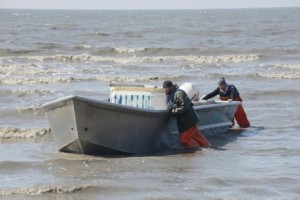 Setnetting on the beaches of northern Cook Inlet isn’t a very visible fishery, but participants argue it’s a viable one. The Northern Cook Inlet setnet fishery operates between a line between Boulder Point in Nikiski and the Kustatan Peninsula on the west side of the inlet and Fire Island. Fishermen can target all five species of Pacific salmon at different times throughout the summer, beginning May 25 with a directed king salmon fishery. As northern district setnetter Trevor Rollman put it in his testimony the Board of Fisheries on Friday, the fishery doesn’t have an official closure, but rather it’s the weather that closes them for the season. Most of the fishermen land in Anchorage. Many of them direct-market their catch, as Rollman said he intended to do with his site in the future. Direct-marketers, sometimes called catcher-sellers, harvest and prepare their catch themselves, selling it directly to customers. Read the full article here 08:57
Setnetting on the beaches of northern Cook Inlet isn’t a very visible fishery, but participants argue it’s a viable one. The Northern Cook Inlet setnet fishery operates between a line between Boulder Point in Nikiski and the Kustatan Peninsula on the west side of the inlet and Fire Island. Fishermen can target all five species of Pacific salmon at different times throughout the summer, beginning May 25 with a directed king salmon fishery. As northern district setnetter Trevor Rollman put it in his testimony the Board of Fisheries on Friday, the fishery doesn’t have an official closure, but rather it’s the weather that closes them for the season. Most of the fishermen land in Anchorage. Many of them direct-market their catch, as Rollman said he intended to do with his site in the future. Direct-marketers, sometimes called catcher-sellers, harvest and prepare their catch themselves, selling it directly to customers. Read the full article here 08:57
Strong harvests, more oversight marked 2016 groundfish fisheries
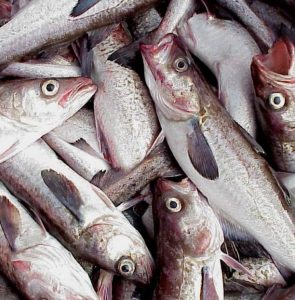 Last year was a good year overall for groundfish fisheries in the region. With a few standout harvests and favorable proposals with the Board of Fisheries, managers are feeling optimistic heading into the new year. The Alaska Department of Fish and Game oversees several groundfish fisheries within the Cook Inlet Management Area, which extends outside of Kachemak Bay to the north Gulf coast. “These fisheries include Pacific cod, sablefish, a directed pelagic shelf rockfish fishery, lingcod, and a small commissioner’s permit Pollock fishery,” said Jan Rumble, Fish and Game area groundfish management biologist. Pacific cod stood out in 2016 as it was open all year long for pot and jig gear in either a parallel or state waters fishery, Rumble said. Read the story here 11:19
Last year was a good year overall for groundfish fisheries in the region. With a few standout harvests and favorable proposals with the Board of Fisheries, managers are feeling optimistic heading into the new year. The Alaska Department of Fish and Game oversees several groundfish fisheries within the Cook Inlet Management Area, which extends outside of Kachemak Bay to the north Gulf coast. “These fisheries include Pacific cod, sablefish, a directed pelagic shelf rockfish fishery, lingcod, and a small commissioner’s permit Pollock fishery,” said Jan Rumble, Fish and Game area groundfish management biologist. Pacific cod stood out in 2016 as it was open all year long for pot and jig gear in either a parallel or state waters fishery, Rumble said. Read the story here 11:19
Board of Fish finalizes recommendations on fish habitat permitting
 The state Board of Fisheries, the body that sets regulations on state-overseen fisheries, voted to send a letter to the Legislature at its Kodiak meeting, held Jan. 10–Jan. 13 recommending the state review Title 16 of the Alaska Statute, which addresses how the commissioner of the Alaska Department of Fish and Game should issue permits in streams determined to be fish habitat. Any activity that may use, divert, obstruct or change the natural flow of a body of water determined to be fish habitat requires a permit, granted by the commissioner of Fish and Game. The current statute says the commissioner shall grant a permit unless an activity is deemed “insufficient for the proper protection of fish and game.” The request was born out of a non-regulatory proposal submitted to the board for its 2016/2017 cycle by a group of 13 citizens of various user groups in fisheries. Read the story here 09:46
The state Board of Fisheries, the body that sets regulations on state-overseen fisheries, voted to send a letter to the Legislature at its Kodiak meeting, held Jan. 10–Jan. 13 recommending the state review Title 16 of the Alaska Statute, which addresses how the commissioner of the Alaska Department of Fish and Game should issue permits in streams determined to be fish habitat. Any activity that may use, divert, obstruct or change the natural flow of a body of water determined to be fish habitat requires a permit, granted by the commissioner of Fish and Game. The current statute says the commissioner shall grant a permit unless an activity is deemed “insufficient for the proper protection of fish and game.” The request was born out of a non-regulatory proposal submitted to the board for its 2016/2017 cycle by a group of 13 citizens of various user groups in fisheries. Read the story here 09:46
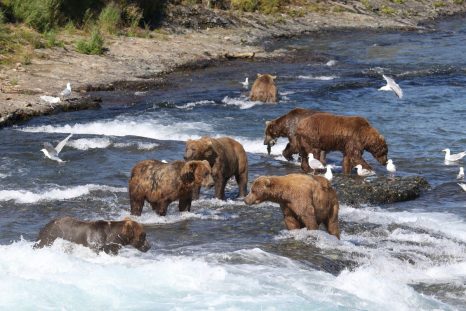
Bears vs. salmon: Solving the McNeil River puzzle
Although brown bears kill more than half the chum salmon entering the world-famous McNeil River each year, state fishery biologists and managers don’t believe the bears’ predation is the primary reason for the river’s stubbornly persistent weak salmon runs. Consequently, although the state Board of Fisheries recently designated the McNeil chum fishery a stock of concern, the board also decided against shooing away or killing some of the bears or helping the salmon avoid them — opting instead to allow the chum runs, over time, to recover on their own. McNeil River — named about a century ago for area rancher Charlie McNeil and bounded by McNeil River State Game Refuge and Katmai National Park — drains into the western portion of Kamishak Bay, approximately 100 miles west-southwest of Homer. The entire drainage lies within the McNeil River State Game Sanctuary, established in 1967, an exceptional bear-viewing area located near a cascading set of falls that has been drawing wildlife lovers since its creation. Read the story here 09:25
Commercial cod fishermen get more space in Kachemak Bay
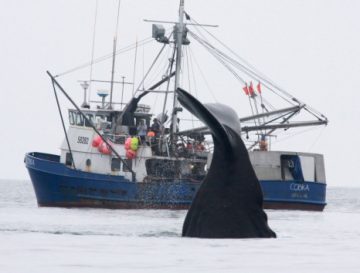 Commercial groundfish fishermen in Kachemak Bay will get more space to operate after the Board of Fisheries redefined the closed waters in the area. In Lower Cook Inlet, commercial fishermen are allowed to use pots to fish for Pacific cod and have been allowed inside Kachemak Bay west of the Homer Spit and along the southern shore of the bay near Seldovia. However, the main section and a swath extending westward in the center of the bay have been closed by regulation because of concerns for the Tanner crab population, which has dropped off significantly in Kachemak Bay in the last two decades or so. The fishery is mostly small boats, and because the fishery takes place in the fall on the edges of Kachemak Bay, they run the risk of bad weather, so to avoid the poor weather, they have limited area, said AlRay Carroll, the proposer, during his public comments during the Board of Fisheries’ meeting in Homer on Wednesday. Read the article here 10:28
Commercial groundfish fishermen in Kachemak Bay will get more space to operate after the Board of Fisheries redefined the closed waters in the area. In Lower Cook Inlet, commercial fishermen are allowed to use pots to fish for Pacific cod and have been allowed inside Kachemak Bay west of the Homer Spit and along the southern shore of the bay near Seldovia. However, the main section and a swath extending westward in the center of the bay have been closed by regulation because of concerns for the Tanner crab population, which has dropped off significantly in Kachemak Bay in the last two decades or so. The fishery is mostly small boats, and because the fishery takes place in the fall on the edges of Kachemak Bay, they run the risk of bad weather, so to avoid the poor weather, they have limited area, said AlRay Carroll, the proposer, during his public comments during the Board of Fisheries’ meeting in Homer on Wednesday. Read the article here 10:28

































